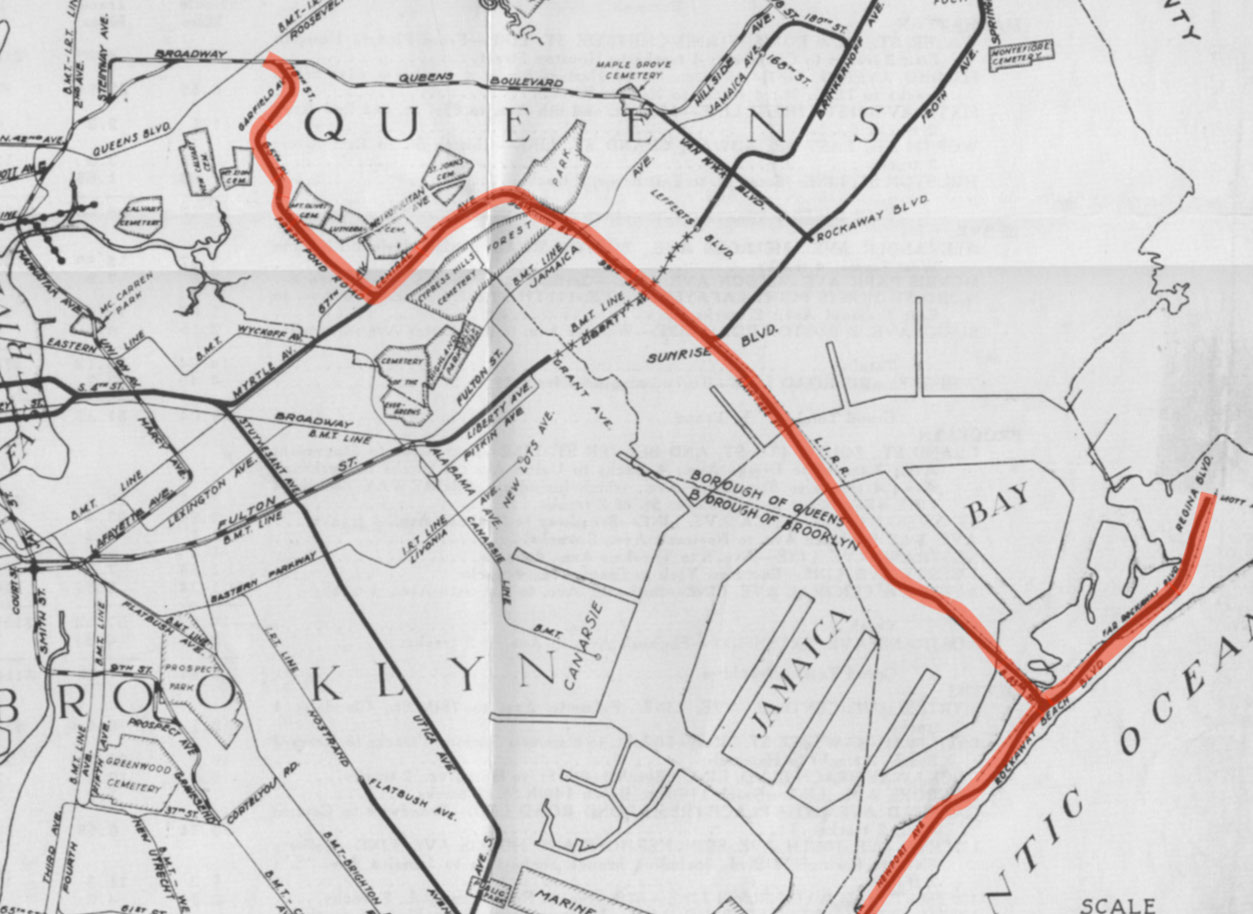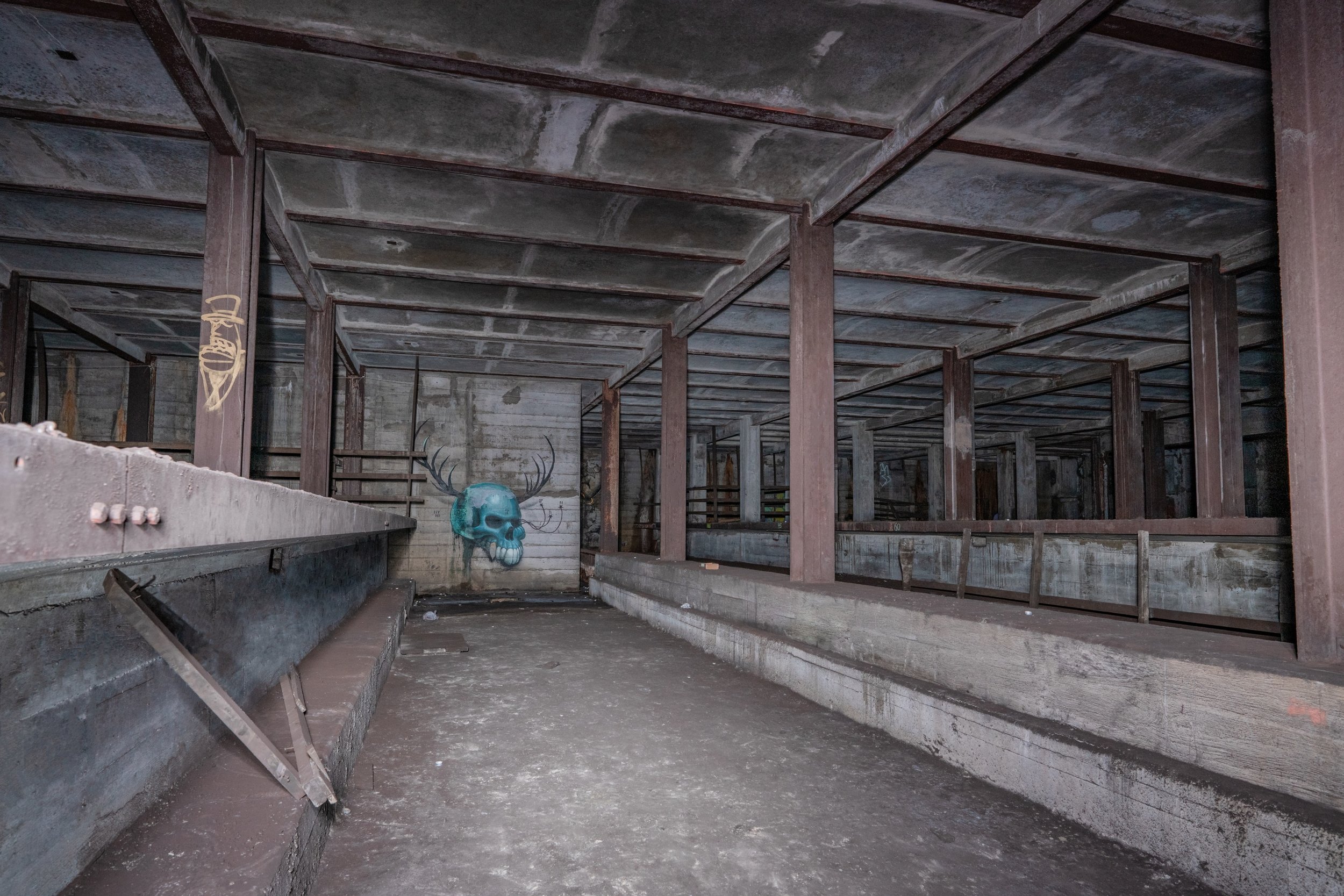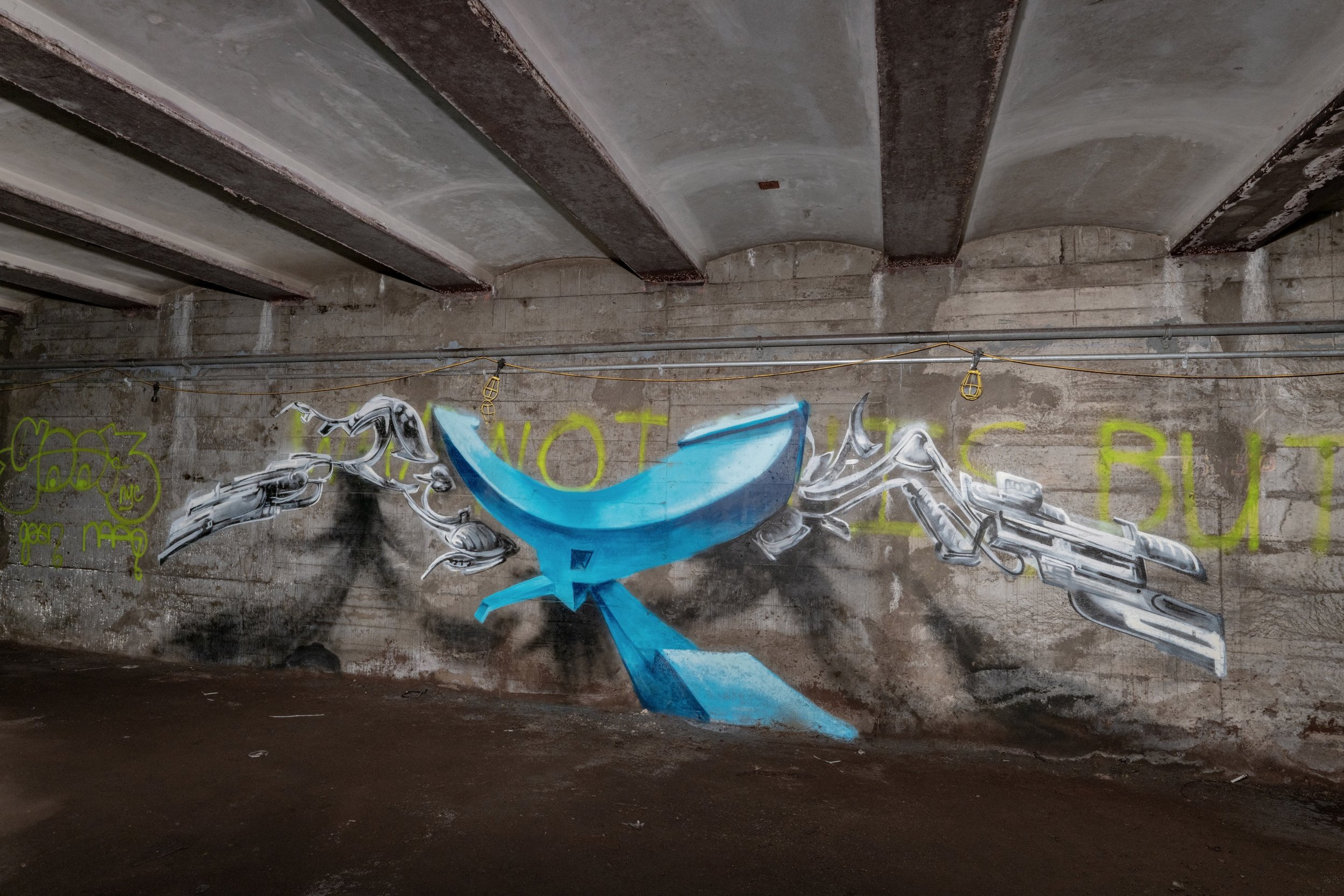S 4th St station shell, AKA “The Underbelly Project”
As we move deeper into the IND Second System plans, it becomes apparent that the IND had big ideas for Brooklyn. One of these plans remains relevant to this day: the Utica Av line. Recently, the MTA began reviewing the feasibility of a Utica Av line as an extension of the IRT Eastern Parkway line (the 3 and 4). A subway going under Utica Av would serve an area which lacks good rapid transit option extremely well. The IND knew this even in the 1929 plan, and they planned accordingly. Several provisions were constructed to allow for other lines to feed into Utica Av, including provisions for the Worth St line, a new crossriver tunnel, and two station shells. The first station shell, built above the Broadway (G) station, was for the S 4th St station, now better known as “Underbelly,” due to the underground art installation titled the Underbelly Project.
The Utica Ave upper level provision
This post is about the second of the two station shells, which was constructed at the Utica Ave station on the Fulton St line (the A and C). The station would have likely been renamed Fulton St—Utica Av upon completion of the Utica Av line, had it ever been built. Furthermore, the Utica Av station contains an enormous full length intermediate level mezzanine, now used as a storage and utility area.
Closed Utica Ave mezzanine
The station shell itself is very dark and extremely hot and humid. There is barely any ventilation within the shell. It is somewhat dusty, though it is not nearly as bad as the “brown snow” in S 4th St. Completely unlike S 4th St, this spot has managed to remain clean for over 80 years, feeling like a sliver of untouched history in a system that has shown rather obvious signs of its age in recent years.











































